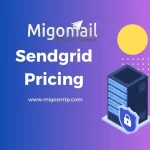[:en]Here are eight tips for Email Marketing that break through the eight-second attention span. We hope you make it to the end.
Avoid embedding important text in images
The first in Email Marketing is Not only does this make your emails more accessible, it enables the most important part of the email — the message — to appear instantly before images even have a chance to load — or the subscriber has a chance to bail.
Spend some time on your subject line
We all know an enticing subject line can make or break your open rate. 30% of email recipients open email based on subject line alone. Make sure you’re following subject line best practices, and don’t be afraid to get creative with emojis and special characters. After all, almost every message is more effective when it includes an image. Also, be aware of how different mobile devices or email clients truncate subject lines that are otherwise fine for desktop.
Incorporate interactive content
Animated gifs, polls, even full-fledged videos are possible inside an email these days. Interactivity invites the subscriber to take part in an action, such as toggling between images, playing a game, or answering a question, without ever having to leave the email. Using interactive elements in your next email can help your message stand out from the pack.
Have a concise, clear call to action
Congrats! You’ve broken the 8-second attention span. But your witty subject line, interactive content, and sleek, scannable format will all be for naught if users don’t know what to do when they get to the end of your email. Add a call to action that points them clearly in the right direction (for example, a “Watch the Video” button).
Think outside the inbox
You can build a pristine, mobile-first email with a clear CTA and a stellar click-through rate, but if it’s sending people to a dated, unresponsive website, you’re probably not going to get the results you want (and over time, subscribers will stop engaging with you). 90% of high-performing marketers agree or strongly agree that email is integrated into their overall marketing strategy. Make sure you’re thinking about the subscriber experience beyond the email.
Be smart with your timing
There is plenty of data out there claiming to pinpoint the ideal send time, but, really, your ideal schedule is going to come down to what works for your industry and your audience. A B2B audience will be most active during work hours. Targeting young professionals? Take advantage of that vulnerable attention span, and hit “send” in mid-afternoon when they may be looking for a momentary distraction. Finally, you should test, test, test until you find what works for your unique emails.[:gb]Here are eight tips for Email Marketing that break through the eight-second attention span. We hope you make it to the end.
Avoid embedding important text in images
The first in Email Marketing is Not only does this make your emails more accessible, it enables the most important part of the email — the message — to appear instantly before images even have a chance to load — or the subscriber has a chance to bail.
Spend some time on your subject line
We all know an enticing subject line can make or break your open rate. 30% of email recipients open email based on subject line alone. Make sure you’re following subject line best practices, and don’t be afraid to get creative with emojis and special characters. After all, almost every message is more effective when it includes an image. Also, be aware of how different mobile devices or email clients truncate subject lines that are otherwise fine for desktop.
Incorporate interactive content
Animated gifs, polls, even full-fledged videos are possible inside an email these days. Interactivity invites the subscriber to take part in an action, such as toggling between images, playing a game, or answering a question, without ever having to leave the email. Using interactive elements in your next email can help your message stand out from the pack. Check out these nifty examples for ideas.
Have a concise, clear call to action
Congrats! You’ve broken the 8-second attention span. But your witty subject line, interactive content, and sleek, scannable format will all be for naught if users don’t know what to do when they get to the end of your email. Add a call to action that points them clearly in the right direction (for example, a “Watch the Video” button).
Think outside the inbox
You can build a pristine, mobile-first email with a clear CTA and a stellar click-through rate, but if it’s sending people to a dated, unresponsive website, you’re probably not going to get the results you want (and over time, subscribers will stop engaging with you). 90% of high-performing marketers agree or strongly agree that email is integrated into their overall marketing strategy. Make sure you’re thinking about the subscriber experience beyond the email.
Be smart with your timing
There is plenty of data out there claiming to pinpoint the ideal send time, but, really, your ideal schedule is going to come down to what works for your industry and your audience. A B2B audience will be most active during work hours. Targeting young professionals? Take advantage of that vulnerable attention span, and hit “send” in mid-afternoon when they may be looking for a momentary distraction. Finally, you should test, test, test until you find what works for your unique emails.[:au]Here are eight tips for Email Marketing that break through the eight-second attention span. We hope you make it to the end.
Avoid embedding important text in images
The first in Email Marketing is Not only does this make your emails more accessible, it enables the most important part of the email — the message — to appear instantly before images even have a chance to load — or the subscriber has a chance to bail.
Spend some time on your subject line
We all know an enticing subject line can make or break your open rate. 30% of email recipients open email based on subject line alone. Make sure you’re following subject line best practices, and don’t be afraid to get creative with emojis and special characters. After all, almost every message is more effective when it includes an image. Also, be aware of how different mobile devices or email clients truncate subject lines that are otherwise fine for desktop.
Incorporate interactive content
Animated gifs, polls, even full-fledged videos are possible inside an email these days. Interactivity invites the subscriber to take part in an action, such as toggling between images, playing a game, or answering a question, without ever having to leave the email. Using interactive elements in your next email can help your message stand out from the pack. Check out these nifty examples for ideas.
Have a concise, clear call to action
Congrats! You’ve broken the 8-second attention span. But your witty subject line, interactive content, and sleek, scannable format will all be for naught if users don’t know what to do when they get to the end of your email. Add a call to action that points them clearly in the right direction (for example, a “Watch the Video” button).
Think outside the inbox
You can build a pristine, mobile-first email with a clear CTA and a stellar click-through rate, but if it’s sending people to a dated, unresponsive website, you’re probably not going to get the results you want (and over time, subscribers will stop engaging with you). 90% of high-performing marketers agree or strongly agree that email is integrated into their overall marketing strategy. Make sure you’re thinking about the subscriber experience beyond the email.
Be smart with your timing
There is plenty of data out there claiming to pinpoint the ideal send time, but, really, your ideal schedule is going to come down to what works for your industry and your audience. A B2B audience will be most active during work hours. Targeting young professionals? Take advantage of that vulnerable attention span, and hit “send” in mid-afternoon when they may be looking for a momentary distraction. Finally, you should test, test, test until you find what works for your unique emails.[:in]Here are eight tips for Email Marketing that break through the eight-second attention span. We hope you make it to the end.
Avoid embedding important text in images
The first in Email Marketing is Not only does this make your emails more accessible, it enables the most important part of the email — the message — to appear instantly before images even have a chance to load — or the subscriber has a chance to bail.
Spend some time on your subject line
We all know an enticing subject line can make or break your open rate. 30% of email recipients open email based on subject line alone. Make sure you’re following subject line best practices, and don’t be afraid to get creative with emojis and special characters. After all, almost every message is more effective when it includes an image. Also, be aware of how different mobile devices or email clients truncate subject lines that are otherwise fine for desktop.
Incorporate interactive content
Animated gifs, polls, even full-fledged videos are possible inside an email these days. Interactivity invites the subscriber to take part in an action, such as toggling between images, playing a game, or answering a question, without ever having to leave the email. Using interactive elements in your next email can help your message stand out from the pack. Check out these nifty examples for ideas.
Have a concise, clear call to action
Congrats! You’ve broken the 8-second attention span. But your witty subject line, interactive content, and sleek, scannable format will all be for naught if users don’t know what to do when they get to the end of your email. Add a call to action that points them clearly in the right direction (for example, a “Watch the Video” button).
Think outside the inbox
You can build a pristine, mobile-first email with a clear CTA and a stellar click-through rate, but if it’s sending people to a dated, unresponsive website, you’re probably not going to get the results you want (and over time, subscribers will stop engaging with you). 90% of high-performing marketers agree or strongly agree that email is integrated into their overall marketing strategy. Make sure you’re thinking about the subscriber experience beyond the email.
Be smart with your timing
There is plenty of data out there claiming to pinpoint the ideal send time, but, really, your ideal schedule is going to come down to what works for your industry and your audience. A B2B audience will be most active during work hours. Targeting young professionals? Take advantage of that vulnerable attention span, and hit “send” in mid-afternoon when they may be looking for a momentary distraction. Finally, you should test, test, test until you find what works for your unique emails.[:]




